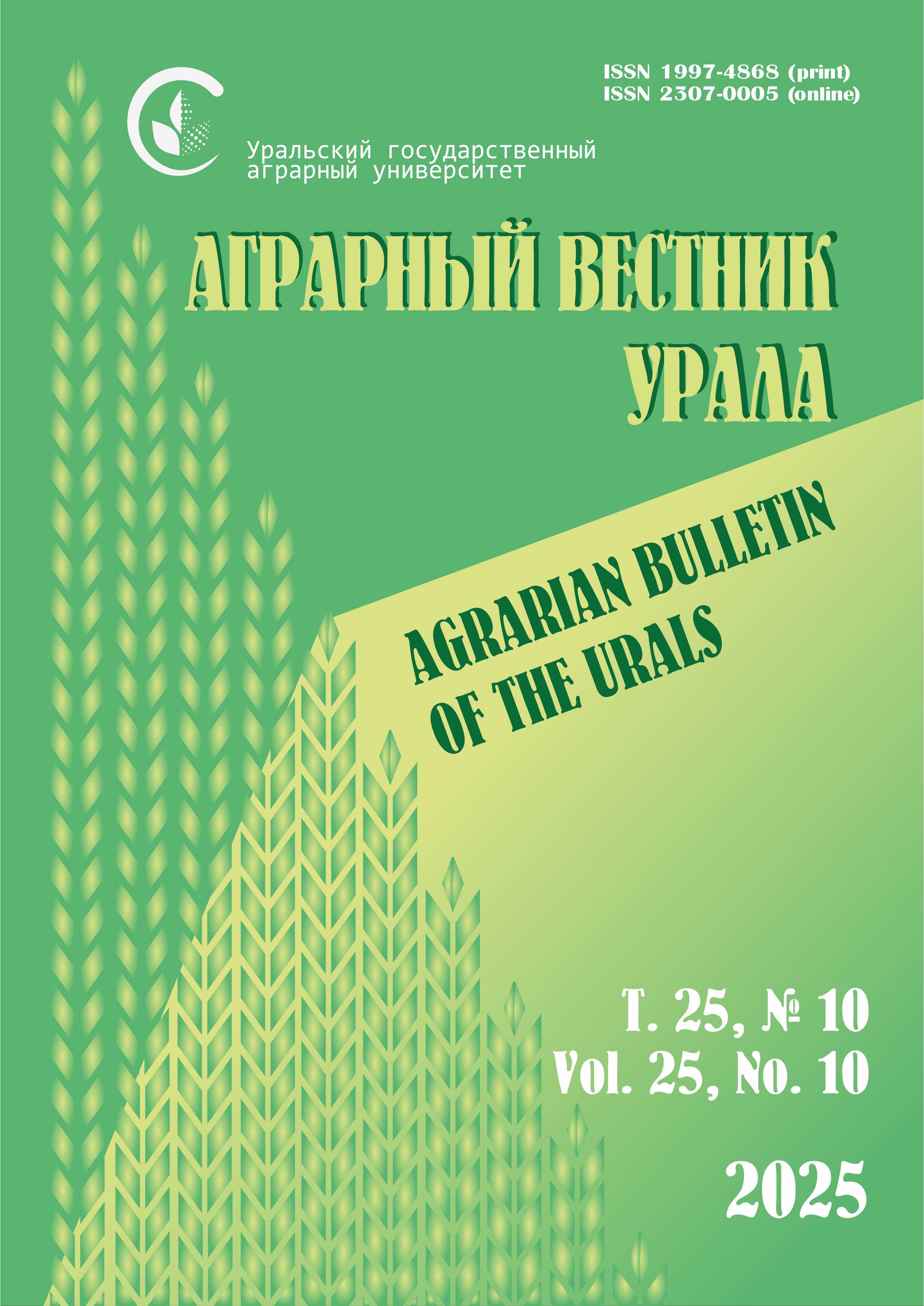Authors:
A. M. Nurgaliev,
R. Sh. Dzhaparov,
G. K. Nurgalieva,
E. K. Akkereeva
West Kazakhstan Agrarian-Technical University named after Zhangir Khan, Uralsk, Republic of Kazakhstan *E-mail: This email address is being protected from spambots. You need JavaScript enabled to view it.
Abstract. The purpose of the research is to conduct the comparative assessment of variable alfalfa varieties and to identify the most productive and adapted varieties to the conditions of the region with a view to their further zoning. The results of research on the study of alfalfa varieties – Karabalykskaya 18, Rambler, Ural’skaya sinyaya, Semirech enskaya mestnaya, Krasnovodopadskaya 8 are presented in this article. Data of the seed germination and plant preservation by years of life, yield and forage capacity of crops are given. Methods: field and calculation (to determine the feed capacity). Results. In the 2011 crops, according to the field germination, the variety of Karabalykskaya 18 (45.8 %) and Semirechenskaya mestnaya (42.8 %) were distinguished. According to 4-year data, the highest percentage of preservation in the variety of Karabalykskaya 18 (14.2 %) and Ural’skaya sinyaya (13.9 %). And the smallest number of preserved plants was noted in the alfalfa variety of Krasnovodopadskaya 8, it is amounted to 10.4 %. The crops produced more mass shoots in next year, due to somewhat high rates of spring precipitation and air temperature. And in terms of the percentage of preservation, the 2012 crops surpassed the previous ones. Thus, in the variety of Karabalykskaya 18 and Rambler, this indicator was equal to 15.1 % and 13.7 %, and in the zoned variety Ural’skaya sinyaya, 15.7 % of the herbage was preserved. The data of green mass yield determination and hay shows that three of the four varieties evaluated were exceed to the standard variety from 1.6 to 8.5 per 1 ha for the collection of green mass and from 0.2 to 2.4 c/ha for the hay harvest. In terms of feed capacity, the highest indicators are in the Karabalykskaya variety 18, and the lowest – in Krasnovodopadskaya 8. So, at the 5th year of life (sowing 2011), 48 cattles can be fed on 10 ha of crops of the first variety for a month, and the second – 41. On the grass stands of the zoned Ural’skaya sinyaya variety, the content of 43 cattles are permissible.
Keywords: alfalfa, variety, seed germination, plant safety, feeding area, herbage, green mass, yield, hay, feed capacity, cattle.
For citation: Nurgaliev A. M., Dzhaparov R. Sh., Nurgalieva G. K., Akkereeva E. K. Urozhaynost’ i kormoemkost’ sortov lyutserny v usloviyakh Zapadno-Kazakhstanskoy oblasti [The yield and feed capacity of alfalfa varieties in the conditions of the West Kazakhstan region] // Agrarian Bulletin of the Urals. 2021. No. 12 (215). Pp. 19–28. DOI: 10.32417/1997-4868-2021-215-12-19-28. (In Russian.)
Download the full text of the article












